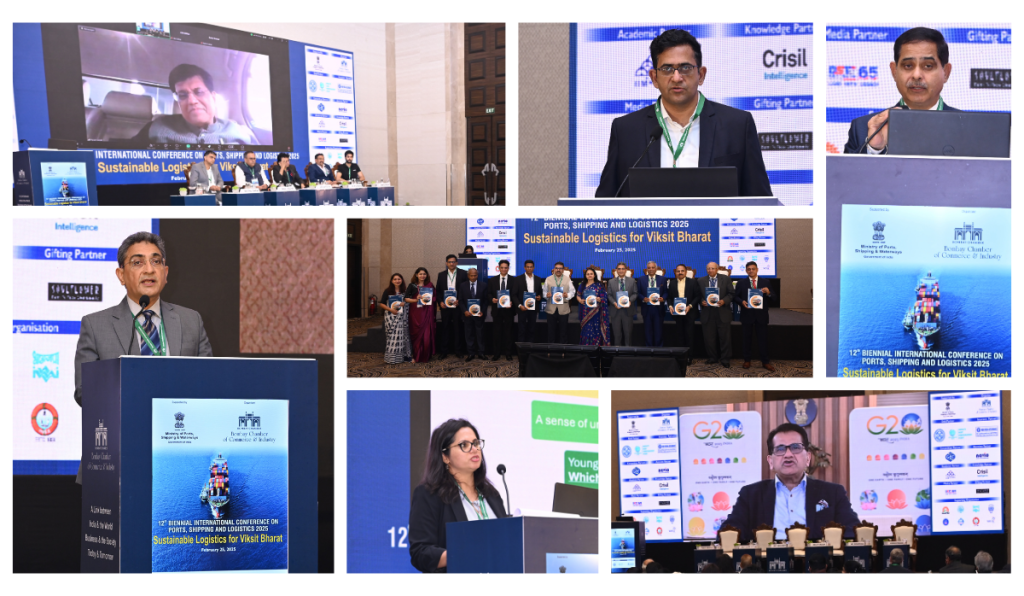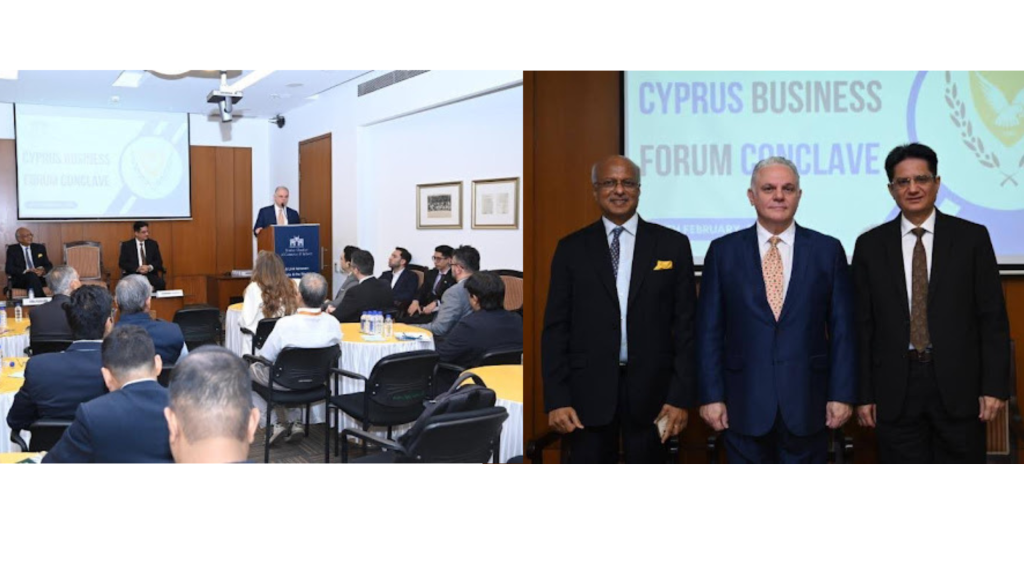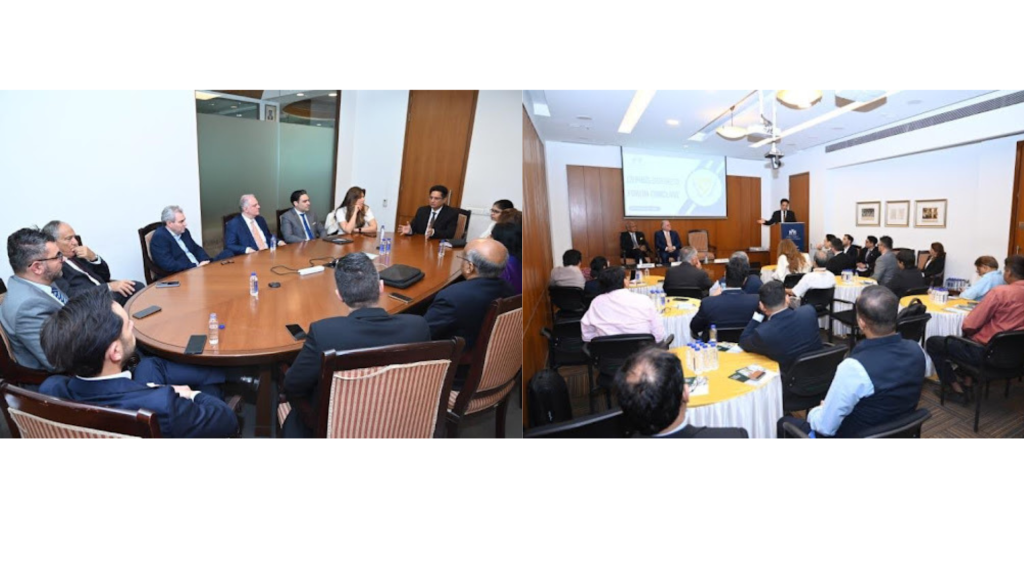Gratuity Fund does not come within the meaning of Assets of Corporate Debtor for distribution under S. 53 IBC – Calcutta HC
Blog
Top Stories
India’s competitive advantage in aluminium production offers a silver lining amid US tariff hike
India’s competitive advantage in aluminium production offers a silver lining amid US tariff hike
Bombay Chamber, Mumbai: Effective March 12, 2025, the US intends to eliminate the system of exemptions and quotas on steel and aluminium imports worldwide, reinstating a full 25% tariff on steel, and increasing tariffs on aluminium imports to 25% from 10%. India being a major exporter of aluminium, the US tariff hike is more likely to impact export volumes and realisations for Indian aluminium producers than domestic steel manufacturers.
As per industry estimates, India exported around 40% of its domestic aluminium production in the calendar year 2024 (CY24). The country’s direct aluminium exports to the US are around 6-8% and the sector could see a higher impact from the tariff hike.
“While the impact of tariff hike on aluminium manufacturers is anticipated to surpass steel, India stands to gain from being one of the lowest-cost aluminium producers, owing to the availability of high-quality bauxite reserves,” said Hitesh Avachat, associate director, CareEdge Ratings.
India’s lowest-cost (of aluminium production globally) advantage is mainly on account of the availability of quality bauxite reserves. This improves India’s cost competitiveness in the global market. Industry experts feel this can provide greater cushion to domestic aluminium producers to meet the increased competition from any over-supply scenario arising from the imposition of tariff by the US.
Aluminium production through the primary route remains lower in the US than in the secondary route (scrap route). Thus, the US aluminium industry remains significantly dependent on imports, with around 75% of the US aluminium’s apparent supply (primary + secondary production + imports–exports + adjustments for stock changes; excludes imported scrap) being primarily met through imports. Canada remains the largest exporter of aluminium to the US, followed by UAE and China.
While China remains the largest producer of primary aluminium, holding approximately 60% of the global production share, India ranks as the second largest producer, contributing around 6%. Unlike steel, India is a net exporter of aluminium. The US accounts for about 6-8% of India’s total aluminium exports, representing a larger share of aluminium exports than steel exports.
Commenting on the on impact of US tariff on the Indian aluminium sector, Sehul Bhatt, director – research, Crisil Intelligence, said, the US move to impose a flat 25% tariff on aluminium imports from March 12, 2025, compared with a raft of lower levies now, will have a negative impact on Indian manufacturers of the metal.
“Nearly half of India’s primary production is currently exported, of which around 6% goes to the US. With users of primary aluminium in that country expected to reduce imports after the 25% tariff kicks in, end users there would prefer locally sourced secondary aluminium, or scrap. This, too, will have a bearing on India because around 26% of the aluminium scrap we import comes from the US. Consequently, we foresee some impact on secondary aluminium and alloys producers as well.”
(Write to us at editorial@bombaychamber.com)
Procurement Notice–State Pharmaceuticals Corporation of Sri Lanka Bid No. – DHS/C/SS/WW/02/25
Procurement Notice–State Pharmaceuticals Corporation of Sri Lanka Bid No. – DHS/C/SS/WW/02/25
I wish to inform you that, the Chairman, Standing Cabinet Appointed Procurement Committee of the Ministry of Health, Sri Lanka has invited sealed bids for supply of following items to the Ministry of Health.
| Bid Number | Closing Date & Time | Item Description | Non – refundable Bid Fee (LKR) |
| DHS/C/SS/WW/02/25 | 17.03.2025 at 10.00 a.m. | Polyaxial MRI compatible Lumber pedicle screws & Instruments sets for Posterior Thoraco – Lumbar Fusion | Rs 500,000/- + Taxes |
Please find attached herewith a copy of the procurement notices of the above.
It would be appreciated, if you could kindly make necessary arrangements to disseminate the same among your membership.
Thank you.
With warm regards,
Shirani Ariyarathne
Actg. Consul General
Minister (Commercial)
Consulate General of Sri Lanka
34, Homi Mody Street, Fort
Mumbai 400001
Tel: (+ 91 22 )22045861/22048303
Fax: (+ 91 22) 22876132
E -mail: slcg.mumbai@mfa.gov.lk
Shipbuilding, Indian-flagged vessels offer attractive opportunities, says Piyush Goyal at Bombay Chamber’s international conference on ports, shipping and logistics.
Shipbuilding, Indian-flagged vessels offer attractive opportunities, says Piyush Goyal at Bombay Chamber’s international conference on ports, shipping and logistics.

Bombay Chamber, Mumbai: Shipbuilding offers tremendous opportunities in India and it’s an area that private sector shipyards need to focus on. “There is very good business potential in ship-building and the Indian government is also looking at ways to improve the entire ecosystem,” said Hon’ble Union Commerce and Industry Minister Shri. Piyush Goyal.
Shri. Goyal was speaking (via video conferencing) at the 12th Biennial International Conference on Ports, Shipping & Logistics 2025, organised by Bombay Chamber of Commerce and Industry in Mumbai on February 25, 2025.
Seeking inputs from industry stakeholders, Shri. Goyal said, making flagging of vessels in India more attractive is another area where the government would like assistance. “While we have the advantage to allow cabotage, I don’t see many ships getting flagged in India. We can also promote more and more imports coming in on Indian flagged vessels that are permitted within the international trading or WTO trading rules. Sadly, we don’t have enough Indian-flagged vessels to be able to do any of that,” he said.
Shri. Goyal appealed to industry stakeholders to take up the responsibility and guide the government on what needs to be done at the Central or State level to help companies come in with flagged vessels in India. “I understand that financing, leasing and insurance of such vessels is being promoted through the GIFT City already. I wonder if a study has been done of the ecosystem and if it needs further liberalisation, improvisation or amendments, we are happy to look at that as well,” he said.
Training and development of seafarers or merchant navy personnel hold significant potential for job creation in India and globally, said Shri. Goyal. “We’d like the industry to assist in designing and developing a hybrid (online and offline) ecosystem for on-the-job training to increase the number of seafarers in India. The shipping industry has a huge multiplier impact, which we haven’t fully leveraged yet,” he said. He added that container ownership and manufacturing in India, increasing export speeds, and easing port congestion are other crucial areas that need to be looked at as well.
The Indian Ports, Shipping and Logistics industry is a critical component of the country’s economy, facilitating trade and commerce both domestically and internationally. Maritime transport remains the backbone of India’s trade, with around 95% of the country’s trading by volume and 70% by value conducted through this mode. India boasts a coastline of 7,516.6 kilometres, with 12 major and over 200 minor and intermediate ports.
While the sector continues to evolve, driven by significant infrastructure investments, policy reforms, and technological advancements there are several challenges as well. In this regard, the 12th Biennial International Conference on Ports, Shipping & Logistics 2025, organised by Bombay Chamber, attempted to discuss and brainstorm on a variety of topics including geopolitical trends, opportunities and challenges for logistics industry, rail connectivity and multimodal integration for sustainable logistics, driving efficiency through connectivity, future of shipbuilding, strengthening supply chain management, port security and cyber security, women in logistics and, potential of digitalisation among others.
Shri. Rajiv Jalota, Retd. IAS, former chairperson of the Mumbai Port Authority, introduced the conference theme: ‘Sustainable Logistics for Viksit Bharat.’ This theme underscored the industry’s commitment to developing a sustainable and efficient logistics infrastructure that aligns with India’s vision of becoming a developed nation. A strategy report was also unveiled. Jalota explained that the main objective of the conference was to find strategic solutions for improving the efficiency of ‘end-to-end logistics’ in India, with a focus on the customer. Discussions covered areas such as digitisation, connectivity, sustainable logistics, green initiatives, port security, and cyber security in Indian logistics.
Sharing insights from an industry survey, Jagannarayan Padmanabhan, practice head and senior director – Transport, Logistics and Mobility, CRISIL, spoke about a strong pipeline of maritime projects and new ports under development. Among challenges being faced by the industry, he pointed towards issues created by regional political parties, need for sustainable ports and the need for increasing the number of women being employed in the logistics sector.
Need of port connectivity, port lead industrialisation, warehousing and logistics parks were seen by the industry as enablers for ports. CRISIL recommended measures like use of digitalisation, policy support measures, skill development and sustainability as catalysts for the sector’s growth.
In his keynote address, Shri. Amitabh Kant, India’s G20 Sherpa and former chief executive officer, NITI Aayog, discussed opportunities in green shipping technologies, sustainable development and transportation. Shri. Kant highlighted about India being strategically located in the grassroots of international trade, promotion of the blue economy including the Sagarmala Programme. He stressed that government, industry and market players need to work together and unlock the potential of a bright economy.
Shri. Sanjay Swarup, chairman and managing director, CONCOR, talked about the role of Indian Railways in cargo shipment and dedicated freight corridors (DFCs). He said that currently 2,438 kilometres (between EDFC and WDFC) of railway line has been made operational and is dedicated to carrying freight trains. DFCs are designed to be high-capacity and high-speed, and are intended to reduce logistics costs and improve efficiency, he said.
Sharing his perspectives on ‘Sustainable Global Trade: Leveraging Technology for Green Logistics Solutions’, Satya Prasad Sahu, Senior Trade Facilitation Specialist at the World Bank, emphasised the critical importance of supply chain resilience.
Capt. B. K. Tyagi, Chairman and Managing Director of The Shipping Corporation of India, provided insights on the future of shipbuilding in India. He stressed the need to strengthen supply chain management through enhanced design capabilities, technological advancements, skilled labour, low-cost financing, and financial incentives. He also highlighted the importance of Just-In-Time (JIT) with lean management and developing local manufacturing units for major machinery and equipment in collaboration with international original equipment manufacturers (OEMs).
On the topic of women in logistics, Capt. Aakriti Barthwal, QHSE Superintendent, Synergy Navis Marine Pvt. Ltd., talked about making a successful career in the maritime industry while also addressing unique challenges faced by female seafarers.
The conference concluded with a presentation by a group of students from the Indian Institute of Management, Mumbai, who won the Business Case Study competition (Hull Cleaning Challenge). This competition was organised by the Bombay Chamber of Commerce & Industry in collaboration with industry and academia. GAC India served as the competition partner, while IIM, Mumbai participated as the academia partner.
The conference was supported by the Ministry of Ports, Shipping and Waterways. Gold partners included Mumbai Port Authority and Jawaharlal Nehru Port Authority. New India Assurance was the insurance partner, while Navio Shipping Pvt. Ltd. was an associate partner. CRISIL Intelligence served as the knowledge partner, with SOULFLOWER and Daily Shipping Times joining as the gifting and media partners, respectively.
Supporting organisations for the international conference included the Ministry of Ports, Shipping and Waterways, Maharashtra Industry, Trade and Investment Facilitation Cell (Maharashtra, India), Indian Ports Association, Inland Waterways Authority of India (IWAI), Shipping Corporation of India, CHEMEXCIL, SEEPZ, Women’s International Shipping & Trading Association (WISTA), and Indian National Shipowners’ Association.
The conference featured distinguished speakers such as S. Krishnan, IAS, Secretary, Ministry of Electronics & Information Technology (MeitY); Dnyaneshwar Bhalachandra Patil, IAS, Development Commissioner, Santa Cruz Exclusive Export Processing Zone (SEEPZ), Special Economic Zone, Mumbai; P.L. Haranadh, IRTS, Chairperson, Paradip Port Authority; Rajesh Menon, Associate Director, DPIIT, Ministry of Commerce and Industry; Hamdi Osman, Founder and CEO, SolitAir and Rampraveen Swaminathan, MD & CEO, Mahindra Logistics.
The event also saw strong industry participation, with 50% representation from leading companies like Hindustan Unilever Ltd (HUL) and Larsen & Toubro (L&T), among others.
(Write to us at legalipr@bombaychamber.com)
Invitation for Bid – Sri Lankan Catering Ltd Ref No. SLC/DPC/GOODS/2025/070, SLC/DPC/GOODS/2025/071 and SLC/DPC/GOODS/2025/073
Invitation for Bid – Sri Lankan Catering Ltd Ref No. SLC/DPC/GOODS/2025/070, SLC/DPC/GOODS/2025/071 and SLC/DPC/GOODS/2025/073
We wish to inform you that, the Sri Lankan Catering Ltd. has invited sealed bids for the following.
| No | Bid Number | Procurement Name | Closing Date & Time |
| 01 | SLC/DPC/GOODS/2025/070 | Supply of Frozen Chicken Breasts Boneless and Skinless (1st May 2025 to 31st October 2025) | 18th March 2025 at 11.00 am (Sri Lanka local time GMT+5:30) |
| 02 | SLC/DPC/GOODS/2025/071 | Supply of Frozen Chicken Thigh Boneless and Skinless (1st May 2025 to 31st October 2025) | 18th March 2025 at 11.00 am (Sri Lanka local time GMT+5:30) |
| 03 | SLC/DPC/GOODS/2025/073 | Supply for Frozen Chicken Breasts Boneless and Skinless (1st May 2025 to 30th April 2026) | 18th March 2025 at 11.00 am (Sri Lanka local time GMT+5:30) |
Please find attached herewith a copy of the procurement notice of the above.
It would be appreciated, if you could kindly make necessary arrangements to disseminate the same among your membership.
Thank you.
With warm regards,
Shirani Ariyarathne
Actg. Consul General, Minister (Commercial)
Consulate General of Sri Lanka
34, Homi Mody Street, Fort, Mumbai 400001
Tel: (+ 91 22 )22045861/22048303, Fax: (+ 91 22) 22876132
E -mail: slcg.mumbai@mfa.gov.lk
India-Cyprus Business Forum Conclave strengthens Bilateral Trade and Investment Opportunities
India-Cyprus Business Forum Conclave strengthens Bilateral Trade and Investment Opportunities
February 20, 2025: Following the Memorandum of Understanding (MoU) between the Bombay Chamber of Commerce and Industry and the Cyprus Chamber of Commerce and Industry, the Honorary Consul of the Republic of Cyprus in Mumbai organised the Cyprus Business Forum Conclave. The event aimed to strengthen bilateral trade and investment between India and the Republic of Cyprus.
Sandeep Khosla, Director General of the Bombay Chamber of Commerce & Industry, welcomed the gathering and highlighted the Chamber’s role in enhancing trade and commerce between India and Cyprus. He also spoke about the vast history of the Bombay Chamber, the oldest chamber in India.
Delivering the keynote address, H.E. Evagoras Vryonides, High Commissioner of the Republic of Cyprus in India, emphasised the long-standing relationship between Cyprus and India, dating back to the 1950s with the formation of the Non-Aligned Movement (NAM). Now a member of the European Union, Cyprus serves as a gateway to the EU. He highlighted several advantages of doing business in Cyprus, including a low corporate tax rate of 12.5%, ease of doing business, an equitable climate, and strong infrastructure. He also identified key areas for potential cooperation between India and Cyprus, such as tourism, education, IT, sports, and weddings as a growing sector.
Viraj Kulkarni, Honorary Consul of the Republic of Cyprus in Mumbai, spoke about India-Cyprus trade relations and outlined plans to expand Cyprus’s presence in Maharashtra over the next six months. He also mentioned ongoing discussions with Air India to increase flight connectivity to Cyprus, which would further facilitate trade and tourism.
In a video message, H.E Manish, the High Commissioner of India to the Republic of Cyprus highlighted the historical ties between India and Cyprus and their strategic positions at the crossroads of Asia and Europe. He noted that India is the fastest-growing economy in the world, while Cyprus is the second-fastest growing economy in the EU. He emphasised strengthening collaboration through the “4 Ts” framework – Trade, Technology, Talent, and Tourism.
The event also featured presentations from key stakeholders, including:
Cyprus Securities and Exchange Commission
Invest Cyprus on Doing Business in Cyprus.
Cyprus Stock Exchange on Opportunities & New Developments.
Techisland
Cyprus Investment Fund Association, on Cyprus Alternative Investment Fund Industry


US tariff hike on steel may push surplus to India
US tariff hike on steel may push surplus to India
Bombay Chamber, Mumbai: The direct impact of the US tariffs on India’s steel sector sales volumes is expected to be minimal as India’s direct steel exports to the US accounted for only about 4% of its total steel exports in calendar year 2024 (CY24). However, there could be an indirect impact on realisations if major steel exporters to the US divert their supplies to India.
“The tariff hike by the US may lead to a substantial amount of surplus production being redirected to other countries, notably the Indian market, which is among the fastest-growing globally,” said Hitesh Avachat, associate director, CareEdge Ratings.
Global steel consumption is predicted to decline for the second year in a row in CY24, primarily due to decreased consumption from major developed nations such as the USA, Japan, and European regions. China, which represents nearly half of global steel production and demand, also saw a continued decline in domestic consumption. Despite this, the Chinese steel industry’s capacity utilisation rate remains robust at 80-85%, leading to significant surplus production, estimated at around 90-95 million tonnes (MnT) in CY24 – an increase from approximately 65 MnT previously in CY22, being exported.
India, on the other hand, has experienced strong steel demand growth, averaging around 10-13% over the past three fiscal years (FY22 to FY24). However, the global decline in demand has created an over-supply situation, pressuring steel realisations. Global steel prices have averaged around US$ 535 per tonne in CY24, down from US$ 788 per tonne in CY22, and have further declined in CY25 hovering around US$ 481 per tonne in January 2025.
“Over the past 3-4 quarters, the domestic steel industry has faced margin pressure owing to a significant decline in realisations, influenced by cheaper imports of steel products,” said Avachat adding that this trend may persist due to an increased steel surplus resulting from the recently imposed tariffs by the US.
CareEdge Ratings stated in its report that the US tariffs could result in the diversion of surplus steel production from major Asian steel manufacturers to the Indian market, likely affecting realisations.
During the first 10 months of FY25, the realisations of the domestic steel industry have already moderated with growing imports, making India a net importer of steel compared to a net exporter up to FY24. While overall volume of steel import into India is low compared to total domestic consumption, the realisations tend to mirror the landed cost parity with international prices.
Amid a subdued global environment, Avachat said, growth in Indian steel demand is expected to continue at a compound annual growth rate (CAGR) of around 8% over the next 2-3 years. The growth will be primarily driven by sustained momentum in end-user sectors such as infrastructure and construction.
While the direct impact of US tariffs on India’s steel industry might appear limited, the broader market dynamics suggest a complex scenario. The potential redirection of surplus steel to India could exert downward pressure on domestic prices, challenging Indian manufacturers. Accordingly, strategic planning and market diversification will be crucial for India to navigate these global shifts and sustain its growth trajectory.
(Write to us at legalipr@bombaychamber.com)
Bids-4
Invitation for Bids
Please see enclosed notices for invitation for bids from organizations in Mauritius.
Prospective bidders may be requested to regularly visit the website to take cognizance of any addendum and/or clarification(s) issued.
The Consulate would highly appreciate if you could kindly circulate the Notices among the members of your Organization.
Thank you for your understanding and cooperation.
Yours sincerely,
D. K. Bucktowar
Consul and Head of Mission
Consulate of the Republic of Mauritius
1107, Regent Chambers
11th Floor, Jamnalal Bajaj Marg
208, Nariman Point
Mumbai – 400 021
Tel. : 022 22825421 /22
Fax No. 022 22845468
Procurement Notice–State Pharmaceuticals Corporation of Sri Lanka
Procurement Notice–State Pharmaceuticals Corporation of Sri Lanka
I wish to inform you that, the Chairman, Departmental Procurement Committee of the State Pharmaceuticals Corporation of Sri Lanka has invited sealed bids for supply of following items to the Ministry of Health.
| Bid Number | Closing Date & Time | Item Description | Non – refundable Bid Fee (LKR) |
| DHS/SS/WW/165/24 |
17.03.2025 at 9.00 a.m. |
Blower /Mister, for blowing away blood off the surgical site, during OPCABG surgery, sterile | Rs 3,000/= + Taxes |
| DHS/SS/WW/146/22 |
17.03.2025 at 9.00 a.m. |
Surgical Non consumables | Rs. 3,000/= + Taxes |
Please find attached herewith a copy of the procurement notices of the above.
It would be appreciated, if you could kindly make necessary arrangements to disseminate the same among your membership.
Thank you.
With warm regards,
Shirani Ariyarathne
Actg. Consul General
Minister (Commercial)
Consulate General of Sri Lanka
34, Homi Mody Street, Fort
Mumbai 400001
Tel: (+ 91 22 )22045861/22048303
Fax: (+ 91 22) 22876132
E -mail: slcg.mumbai@mfa.gov.lk
Registration of Suppliers to Supply Coal for Lakvijaya Power Plant (900MW) under Spot and Term Tenders
Registration of Suppliers to Supply Coal for Lakvijaya Power Plant (900MW) under Spot and Term Tenders
I wish to inform you that, the Chairman, Special Standing Cabinet Appointed Procurement Committee (SSCAPC) of the Ministry of Energy on behalf of Lanka Coal Company (Private) Ltd. (LCC) invites sealed applications for Registration of Coal Suppliers from principals, who wish to register themselves with LCC to supply coal for Lakvijay Power Plant – Puttalam, Sri Lanka under spot and term tenders
There is no deadline for submission of applications. Applications will be opened every Monday at 10.00 am (Sri Lanka Standard Time).
Please find attached herewith a copy of the procurement notices of the above.
It would be appreciated, if you could kindly make necessary arrangements to disseminate the same among your membership.
Thank you.
With warm regards,
Shirani Ariyarathne
Actg. Consul General
Minister (Commercial)
Consulate General of Sri Lanka
34, Homi Mody Street, Fort
Mumbai 400001
Tel: (+ 91 22 )22045861/22048303
Fax: (+ 91 22) 22876132
E -mail: slcg.mumbai@mfa.gov.lk


It is a long established fact that a reader will be distracted by the readable content of a page when lookin







